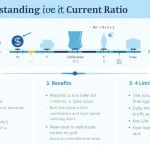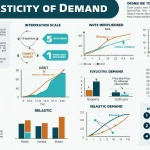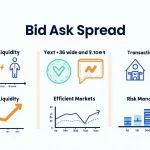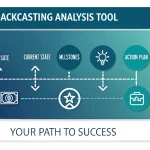Cryptocurrency Project Analysis
Is this tool helpful?
How to Use the Cryptocurrency Project Analysis Tool Effectively
This tool helps you evaluate cryptocurrency projects by collecting key data points. To get the most accurate and useful analysis, follow these steps carefully:
- Enter the Project Name: Provide the official name of the project you want to analyze. For example, use “Solana” or “Avalanche” instead of generic terms.
- Provide the Launch Date: Select the date when the project officially started. Example formats include “March 16, 2020” for Solana or “July 21, 2020” for Avalanche. Use the calendar picker for accuracy.
- Input Founding Team Details: Describe the founding members, their expertise, and background. For example, “Anatoly Yakovenko, former Qualcomm engineer specializing in distributed systems. Emin Gün Sirer, professor focused on distributed computing and cryptocurrencies.”
- Uniswap Address (Optional): If the project’s token is available on Uniswap, enter the contract address here. For example, ”0x5923ec87f366b8919c9d9cfd36ac2046a7f68504”. This helps provide liquidity insights but is not mandatory.
- Enter the Token Symbol: Add the official trading symbol for the token, like ”SOL” for Solana or ”AVAX” for Avalanche.
- Submit the Form for Analysis: Click the analyze button to send the information. The tool processes your input and generates an in-depth report covering multiple aspects of the cryptocurrency project.
Introduction to the Cryptocurrency Project Analysis Tool
The Cryptocurrency Project Analysis Tool offers a structured way to examine blockchain projects by compiling essential data into an easy-to-understand report. It helps you uncover important details about a project’s development, team, liquidity, finances, and price history. This structured insight supports better decision-making, whether you’re an investor, researcher, or developer.
By using this tool, you save time on manual research and get standardized, reliable information that highlights a project’s strengths and risks. It equips you to compare projects and identify viable opportunities in the competitive crypto market.
Key Benefits of the Tool
- Perform comprehensive cryptocurrency project research quickly
- Access standardized metrics for easy project comparison
- Understand core project milestones and founders’ qualifications
- Analyze liquidity dynamics to assess trading health
- Review detailed financial figures for transparency
- Examine historical price movements and relevant events
Practical Applications and Use Cases
The tool serves various users from individual investors to analysts and blockchain enthusiasts. Here are common ways you can apply it:
1. Individual Investors
Use Case: Quickly vet new cryptocurrencies to add to your portfolio by comparing team experience, liquidity, and market data before committing funds.
2. Cryptocurrency Researchers and Analysts
Use Case: Generate detailed project overviews for reports, articles, or investment theses by aggregating critical data effortlessly.
3. Blockchain Developers and Enthusiasts
Use Case: Assess competitor projects or partners to understand their development history, tokenomics, and market impact for strategic planning.
Understanding Liquidity Through Example Calculations
Liquidity is vital for trading ease and price stability. The tool analyzes liquidity using data such as total value locked (TVL), trading volume, and the number of liquidity providers.
Consider a hypothetical project “ChainLinker (CLK)” with the following liquidity data:
- Total Value Locked (TVL) on Uniswap: $5,000,000
- 24-hour Trading Volume: $1,000,000
- Number of Liquidity Providers: 250
We calculate the Liquidity Ratio as:
$$ \text{Liquidity Ratio} = \frac{\text{24-hour Trading Volume}}{\text{Total Value Locked}} = \frac{1,000,000}{5,000,000} = 0.2 \text{ or } 20\% $$A 20% liquidity ratio means that daily trading volume is 20% of the total locked liquidity, indicating active market participation.
To find the Average Liquidity per Provider, use:
$$ \text{Average Liquidity per Provider} = \frac{\text{Total Value Locked}}{\text{Number of Liquidity Providers}} = \frac{5,000,000}{250} = 20,000 $$This means each liquidity provider supplies around $20,000 on average, illustrating diversity in liquidity contributions.
Core Components of the Project Analysis Report
Project Summary and Milestones
Review the project’s key historical milestones such as:
- Whitepaper release
- Private and public token sales
- Mainnet or platform launches
- Protocol upgrades and forks
- Strategic partnerships
Founding Team Analysis
Explore the founders’ educational backgrounds, professional experience, and roles within the project. Team strength often signals potential for innovation and execution.
Liquidity Analysis
Assess liquidity health through metrics like TVL, trading volume, and liquidity provider numbers. Healthy liquidity supports price stability and easy trading.
Financial Metrics
Evaluate market capitalization, total supply, circulating supply, and token distribution to understand the economic foundations of the token and risks of dilution.
Price Action and Event History
Analyze historical price trends, highlighting significant events affecting price movements such as major announcements, crashes, or rallies. This provides insight into market sentiment and volatility.
Important Disclaimer
The calculations, results, and content provided by our tools are not guaranteed to be accurate, complete, or reliable. Users are responsible for verifying and interpreting the results. Our content and tools may contain errors, biases, or inconsistencies. Do not enter personal data, sensitive information, or personally identifiable information in our web forms or tools. Such data entry violates our terms of service and may result in unauthorized disclosure to third parties. We reserve the right to save inputs and outputs from our tools for the purposes of error debugging, bias identification, and performance improvement. External companies providing AI models used in our tools may also save and process data in accordance with their own policies. By using our tools, you consent to this data collection and processing. We reserve the right to limit the usage of our tools based on current usability factors.







